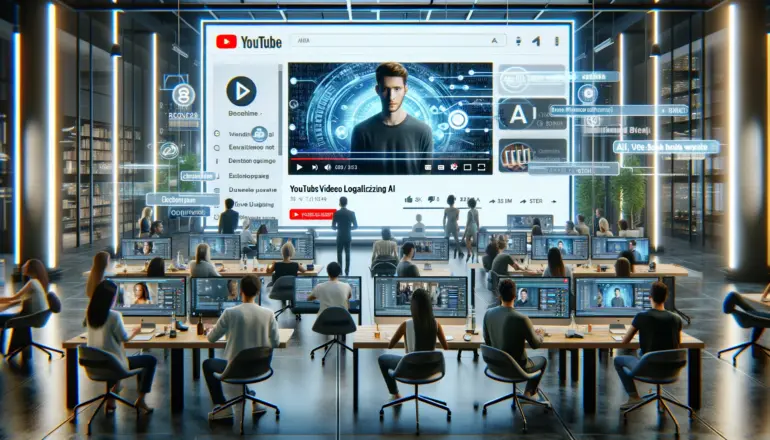In today’s digital landscape, video content reigns supreme. YouTube alone draws over two billion monthly viewers, making it a prime channel for global outreach. However, penetrating international audiences hinges on video localization – adapting videos linguistically and culturally. Traditionally an intensive process, localization is being revolutionized by artificial intelligence (AI).
AI-powered tools are enhancing translation accuracy, accelerating subtitling, enabling seamless dubbing, and automating graphic design for localized thumbnails. For creators seeking worldwide resonance, leveraging these technologies is key for cost-effective scaling.
This guide explores leading AI strategies for localizing YouTube videos. It provides a blueprint for expanding reach and engagement on a global level through harnessing automation, machine learning, and data-driven insights. From optimizing subtitles to synthesizing speech, discover how AI can unlock localization success.

- The Importance of Video Localization
- How AI Transforms Video Localization
- 10-Step Strategy for AI-Powered Video Localization
- Spotlight on Leading AI Video Localization Tools
- Practical Applications and Use Cases
- Challenges and Best Practices
- Conclusion
- Top 10 Questions Related to AI Strategies for YouTube Localization
The Importance of Video Localization
Understanding Localized Video Content
Video localization, or transcreation, involves adapting a video linguistically and culturally to resonate with audiences worldwide. It goes beyond translation to convert not just words, but tone, context, visuals, and regional preferences. The objective is conveying information in an relatable, engaging way across different geographies.
Strategies like subtitling, dubbing, voiceovers, and graphic changes help content feel tailored specifically to local viewers. Localization boosts comprehension, retention and overall watchability.
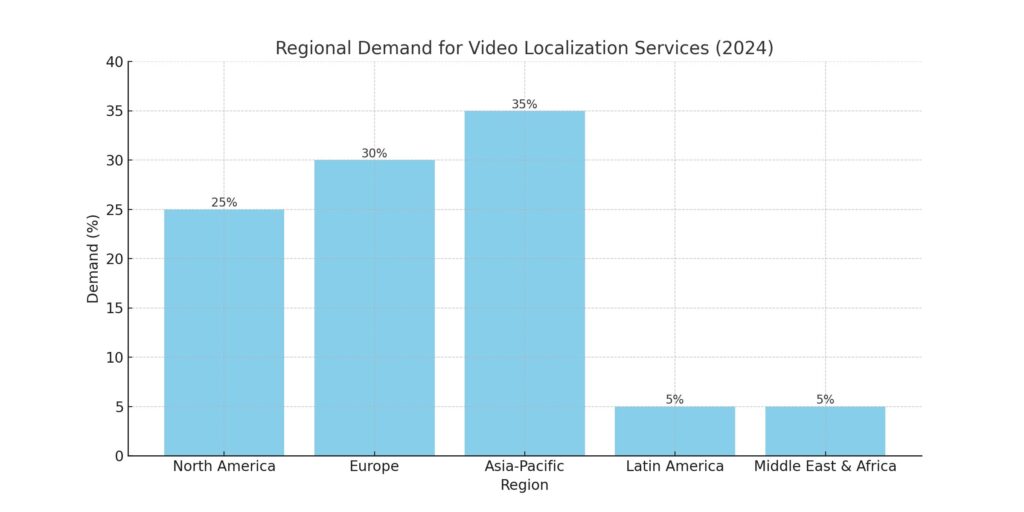
Key Benefits of Video Localization
Localizing videos delivers quantifiable dividends across metrics:
- Increased conversion and engagement: Viewers are far more likely to watch, share and act after watching videos in their native tongue. Localization heightens relevance and emotional connection.
- Expanding reach and access to global markets: Breaking language barriers allows tapping into broader demographics that were previously unreachable. Wider visibility directly correlates to greater viewership.
- Enhanced user experience through cultural relevance: Localization considers regional sensibilities and customs. Nuanced visuals, audio and messaging better resonate across cultural contexts.
- Gaining a competitive edge: In a crowded marketplace, localization gives creators an edge. Standing out abroad not only builds market share but also strengthens authority and brand recognition.
- Meeting legal and compliance requirements: Adapting videos to respect country-specific regulations around permissions, disclaimers etc. reduces liability risks. This facilitates smooth market entry.
- SEO and visibility improvements: Optimized translated titles, descriptions and metadata improves discoverability in foreign searches. Higher rankings beget increased impressions.
- Sales and conversion uplift: McKinsey notes that companies that localize their web content have almost twice the foreign conversion rates. Localized videos deliver a similar boost.
In today’s global economy, localization is key for creators to thrive internationally. AI-led innovations provide scalable, efficient ways to undertake this imperative.
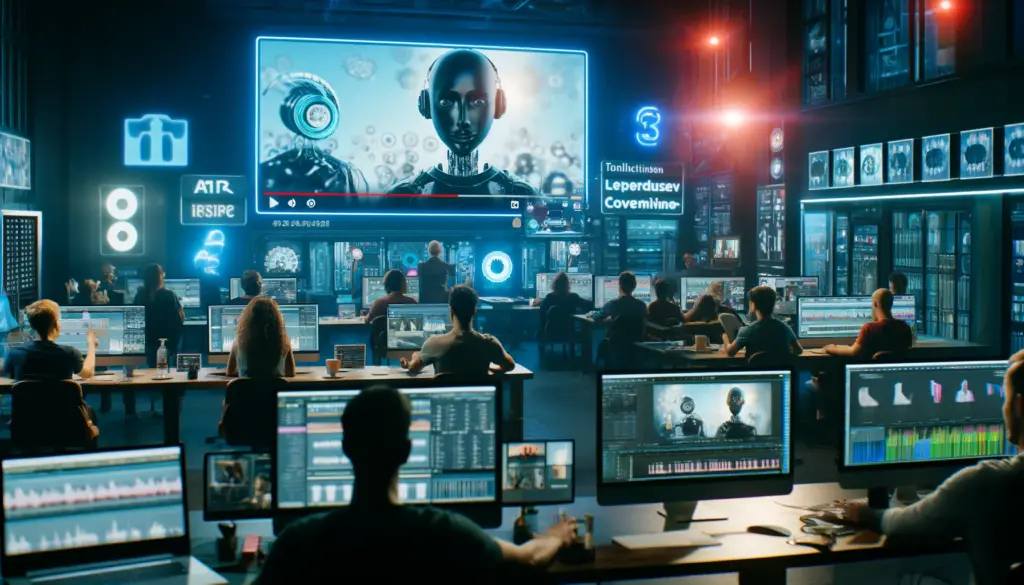
How AI Transforms Video Localization
Overview of AI Capabilities in Video Localization
AI is revolutionizing localization by automating labor-intensive sub-processes:
- Translation and multilingual support: AI handles initial video translation through automated cross-language voice dubbing, subtitling and metadata adaptation. This exponential efficiency boost reduces localization costs by up to 25% according to YouTube.
- Subtitling and captioning: Machine learning drafts subtitles and captions in multiple tongues by analyzing speech patterns. This alleviates reliance on human transcribers. Speech recognition AI also creates rough edits for editors.
- Voiceover and dubbing services: AI synthesizes natural, humanesque voiceovers in different languages. It also auto-generates lip-synced dubbing to facilitate seamless post-production.
- Use of AI presenters and synthetic media: Emergent generative AI can create localized video narrators, spokespeople or hosts tailored to each market. It enables hyper-custom cultural adaptation.
- AI-assisted video editing: ML recommends data-derived edits like cropping, scene modifications etc. to sharpen cultural resonance based on historical viewer signals.
- Visual design and automated image generation: AI graphic engines auto-generate localized titles, thumbnails and supporting visuals tuned to regional preferences for maximizing click-through rates.
This augments localization capacity while retaining authenticity that exceeds automated translation. Next, we review the nitty-gritty implementation process.
AI-Driven Processes in Video Localization
Modern video localization leverages AI across four key phases:
1. Preliminary Transcreation
Upload your video file to a platform like Rask or Smartcat. AI analyzes linguistic and visual content, offering dynamic translation. Also gather localization insights from initial auto-generated subtitles.
2. Multilingual Editing
For subtitles, utilize machine-generated draft edits. Refine text for tone, terminology and cultural nuances. Use auto-transcription to swiftly generate voiceover scripts. Employ AI to transcreate graphics and other visuals.
3. Foreign Audio/Video Production
Create foreign narrator voices via AI voice cloning. Auto-lip sync generated voiceovers to original video using speech animation algorithms. Alternatively, utilize AI news presenters tailored to each market for narration.
4. Testing and Distribution
Confirm localization quality meets standards through AI analytics of translated text, visuals and speech. Real-time tuning maximizes resonance. Publish videos natively within each localized YouTube channel, using AI SEO to optimize discoverability.
AI breakthroughs allow executing this sophisticated workflow with unprecedented ease. Next, we detail a step-by-step game plan.
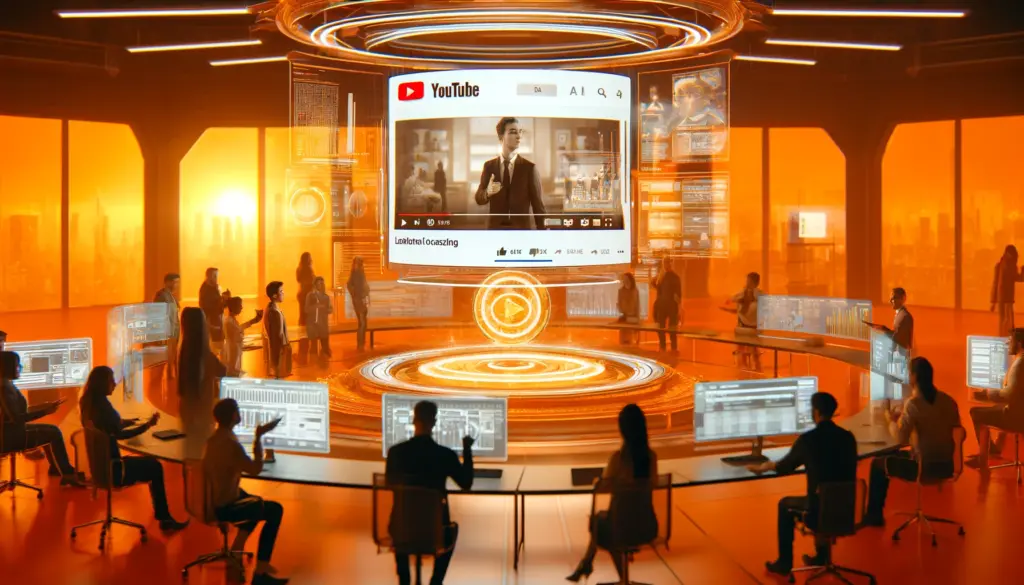
10-Step Strategy for AI-Powered Video Localization
Follow this roadmap to harness AI’s potential in localizing content:
Step 1: Perform Initial Localization Scoping
Define localization goals, target countries, metrics, timelines and processes. Take stock of costs, technology and team considerations.
Step 2: Translate Metadata
Utilize AI engines like DeepL or Google Translate to swiftly generate translated titles, descriptions and tags. Refine texts for accuracy.
Step 3: Transcribe and Translate Video Script
Upload files to platforms like Descript that leverage AI for quick transcription and translation. Edit for tone, clarity and keywords. Verified translations increase authenticity.
Step 4: Auto-Generate Multilingual Captions
Harness speech recognition and neural machine translation in tools like Matroska Subtitles to swiftly extract dialogue and draft multilanguage captions. Further polish texts.
Step 5: AI-Assisted Graphic Design
Employ AI graphic engines to auto-generate localized titles, logos, thumbnails and supporting visuals tuned to regional creative preferences for maximizing click-through rates.
Step 6: Produce Foreign Voiceovers/Dubbing
Use AI voice cloning services like WellSaid Labs to swiftly synthesize narrator voices in target languages. Alternatively, utilize localized AI avatar presenters tailored to each market’s preferred visual and vocal aesthetic.
Step 7: AI Video Editing Guidance
Incorporate data-derived localization insights from platforms like Descript for suggested edits to titles, scenes, graphics etc. tuned to historical regional engagement patterns.
Step 8: Confirm Localization Quality
Cross-check caption accuracy via leading providers like Matroska or CaptionHub. Confirm voiceover quality using speech analytics. Ensure visual edits increase cultural resonance.
Step 9: Optimize SEO
Refine translated metadata to target region-specific search trends. Also provide native translations for surrounding video content and channel trailers to boost discoverability.
Step 10: Launch and Iterate
Go live within localized YouTube channels, Facebook pages, etc. Make use of built-in AI-powered analytics dashboards to gain viewer insights. Continuously localize additional videos based on performance data.
This phased, optimized path allows efficiently harnessing AI to penetrate global audiences. Next, we review five leading solutions to incorporate.
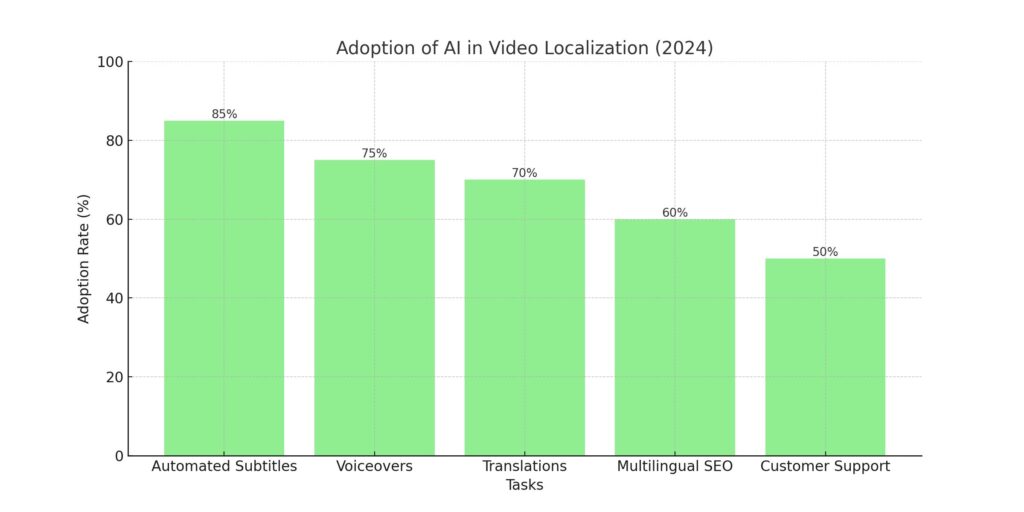
Spotlight on Leading AI Video Localization Tools
The video localization ecosystem encompasses sophisticated AI offerings catering from translation to distribution. Below we analyze five top solutions:
Rask AI
Rask AI offers an end-to-end platform for multimedia translation and localization needs. Its key capabilities include:
- Speech-to-text transcription – Accurately converts video dialogue into text transcripts ready for translation using automatic speech recognition.
- Translation – Translates transcripts into 100+ language using adaptive neural machine translation, while retaining proper meaning and context.
- Subtitling – Auto-generates subtitles and closed captions based on translated transcripts, with editing capabilities.
- AI voiceover – Creates natural, humanesque voiceovers from text in 75+ languages using advanced AI synthesis.
- Project management – Enables organizing large volume of videos via shareable project dashboards for assign roles and tracking progress.
- Quality analysis – Provides quantitative quality measurement of linguistic accuracy and synchronization of translations.
Rask is ideal for media teams aiming to scale subtitle creation and video voiceovers across global content libraries. It brings automation without sacrificing quality.
Dubverse
Dubverse focuses specifically on AI-based video dubbing. It allows swapping dialogue in existing videos through:
- Lip sync engine – Dubverse achieves accurate 1:1 lip to speech synchronization powered by advanced computer vision algorithms and speech animation frameworks.
- Realistic voice cloning – Users can utilize Dubverse synthetic voices which mimic human qualities or upload custom voice recordings.
- Multilingual support – Video dubbing can be produced in over 100 regional languages, with smooth lip movements matched.
- Collaborative editing – Teams can utilize shared workflows to refine auto-generated dubbing tracks before final render.
- Formats and integration – It works with common video files like MP4, integrates with leading platforms like YouTube, Vimeo etc.
For creators seeking perfectly synced foreign language dubbing, Dubverse delivers through its specialized AI approach. Dubbing jobs which typically take months are collapsed to days.
Elai
Elai by WellSaid Labs focuses on creating human-level AI voice content. For video localization it enables:
- Realistic voice cloning – Elai can instantly clone any voice with just a few minutes of sample audio. Mirrored voices sound natural.
- Voiceover generation – It flawlessly converts text transcripts into voiceovers in 75+ languages and dialects voiced by realistic AI personas.
- Customizable vocal range – Beyond copying existing voices, users can also fully customize pitch, tone, accent and other attributes when crafting new AI voices.
- Audio quality – Voiceovers are clear sounding thanks to robust text-to-speech models and supporting acoustic algorithms.
- Ease of use – A simple browser-based interface means creators can swiftly build voiceovers to humanize video translation.
For those seeking to personalize translated video narration with recognizable yet artificial voices, Elai empowers effortless voice cloning and synthesis.
Maestra ADR
Maestra offers an AI-powered dialogue replacement and dubbing solution. It enables:
- Auto lip sync – Maestra perfectly mimics lip movement timings based on the original video’s speech patterns using machine learning algorithms. This synchronization looks seamless.
- Multilanguage dubbing – Fresh dialogue recordings or text entries can generate new language dubbing matched to lip movements in the original footage.
- Realistic speech simulation – Dubbed dialogue reflects natural verbal cadences and accurate phonetic articulations for believable results.
- Timeline editing – An integrated timeline editor allows for precision tuning of auto-generated dubbing prior to final render.
- Cloud platform – As a web app, Maestra enables easy collaboration across geographically dispersed creative teams during the localization process.
For large-scale video dialogue replacement needs, Maestra drives efficiency through AI while retaining fine-tuned control.
MadLipz
MadLipz brings a consumer-oriented spin on AI localization by allowing anyone to create their own absurd dubbed videos. It provides:
- Viral video dubbing – Anyone can select a trending video, then enter humorous fictional dialogue timed to the original footage which MadLipz will lip sync convincingly.
- Meme creation – The platform has become popular for parodying pop culture scenes. Its slogan is “Dubsmash on steroids”.
- Mobile apps – Alongside the web platform, iOS and Android apps enable dubbing videos on-the-go. User-generated clips can be shared to social media.
- Pre-existing content – Beyond user uploads, their library includes popular funny video clips ideal for overdubbing for quick laughs rather than complex localization needs.
- Voice changers – Users can alter their real or synthesized voices for added comic effect within dubbed videos.
For viral content creators and everyday consumers alike seeking a fun outlet for absurd AI video overdubs, MadLipz delivers.
These diverse tools showcase AI’s flexibility in cost-effectively streamlining video localization. Let’s now examine use cases benefitting from this technology.
Practical Applications and Use Cases
AI video localization unlocks myriad applications across sectors:
Multilingual Streaming Platforms
Services like Netflix leverage AI-enabled solutions to rapidly localize vast content libraries to drive global subscriber acquisition. Machine translation, auto subtitling and synthetic narration facilitate swift, scalable adaptations.
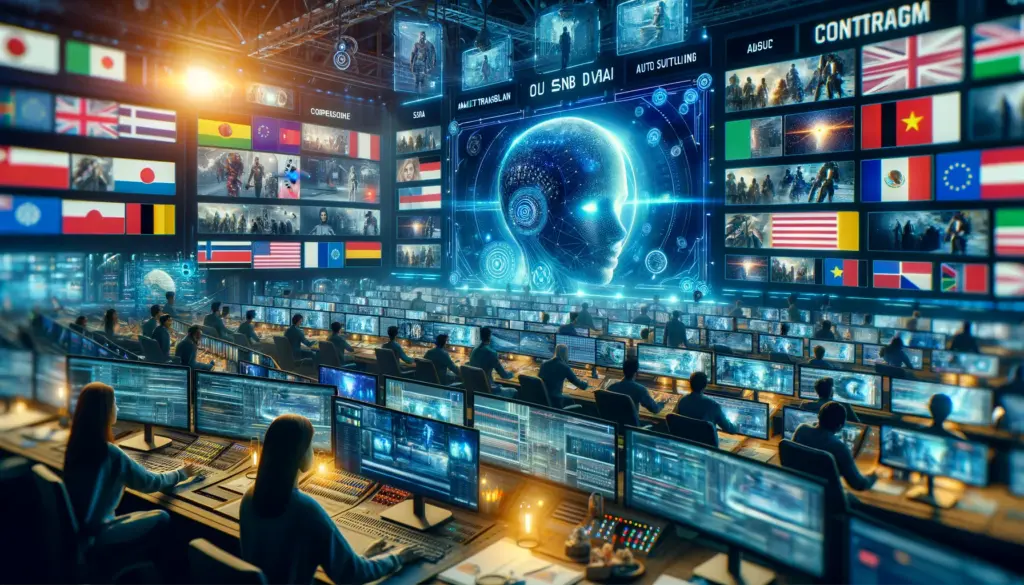
Cross-border Medical Collaborations
Remote medical education sites like Medting utilize AI to transcribe and translate surgery tutorial videos into worldwide languages. Instant multi language captions expand knowledge sharing.

Educational Content Localization
Tools like Rask allow universities and e-learning platforms to easily localize instructional videos. Automated voiceovers, subtitles and metadata translation propagate materials abroad, increasing international enrollment.
The strategies in this guide help content creators tap these opportunities by capitalizing on AI’s localization abilities. Nevertheless, persisting challenges warrant examination too.
Challenges and Best Practices
While AI propels video localization, Common obstacles still arise:
Common Challenges in Video Localization
- Suboptimal translation accuracy: Machine translation still lags human proficiency in handling linguistic nuance. Regional dialects add complexity.
- Lip synchronization intricacies: Even robust algorithms struggle to smoothly map translated audio to original video speech flow across languages.
- Compliance considerations: From platform guidelines to territorial rules around depictions, disclosures etc., myriad regulations require review to avoid violations.
- Search visibility: Boosting rankings in foreign languages hinges on niche optimization tactics beyond verbatim translation.
Mitigating these issues comes down to smart implementation:
Best Practices for Ensuring Quality and Effectiveness
- Accurate translation and cultural sensitivity: Combat language lapses via expert human checks. Verify regional resonance through geo-specific focus groups.
- Quality voice acting and ADR alignment: Use native voice talent and specialized AI lip sync services to achieve believable dubbing.
- Compliance requirements: Seek guidance from legal, tax and other advisors to confirm adherence in target countries.
- SEO and metadata strategies: Incorporate locale-specific keywords, link building and social promotion to increase organic visibility.
Cross-functional collaboration enables unlocking AI’s upside while overcoming persistent complexities in penetrating global audiences.
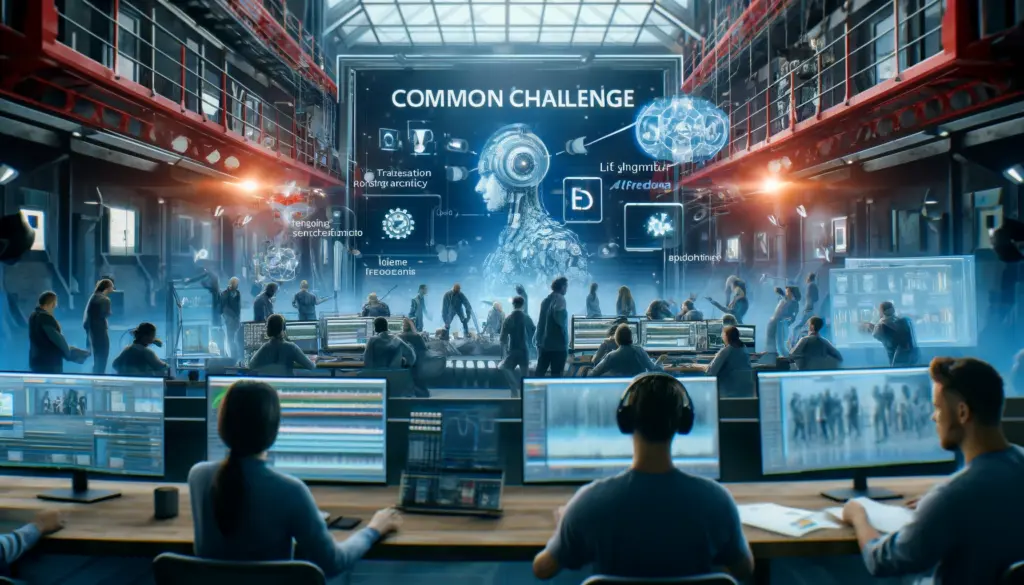
Conclusion
Video creators today face a pivotal juncture with emerging localization channels promising unprecedented global direct access. AI propels data-driven, automated worldwide audience building. Harnessing these tools not only saves on traditional translation costs but also opens avenues to massive new viewership pools.
However, avoiding missteps hinges on correctly configuring AI engines, confirming cultural resonance, and plotting localization launches holistically. With the right fusion of technology and human oversight, AI paves the path to multinational dominance. Localization success ultimately underpins content that crosses borders, languages and cultures to champion meaningful human connections.
Top 10 Questions Related to AI Strategies for YouTube Localization
What is video localization?
Video localization adapts content to different languages and cultures, enhancing relevance and engagement for diverse audiences.
How does AI improve video localization?
AI streamlines translation, subtitling, dubbing, and cultural adaptation, making localization faster and more accurate.
Can AI localize media content?
Yes, AI can localize various media types, including videos, images, and PDFs, by translating and adapting content to target markets.
How do subtitles and dubbing affect viewer preferences?
Viewer preferences vary; many in Asia prefer subtitles, while Europeans may favor dubbed content to meet diverse accessibility needs.
What are the key components of AI in localization?
AI’s role in localization includes machine learning, deep learning, and natural language processing to automate and enhance translation tasks.
How can AI provide a better customer experience?
AI-driven multilingual chatbots and voice assistants improve customer interactions by offering responsive and intuitive service in multiple languages.
What are practical steps to localize YouTube videos?
Localize by translating video metadata, adding multilingual subtitles, and using AI tools for automated dubbing to enhance global reach.
How does localization influence YouTube SEO?
Localizing video content, including titles and descriptions in multiple languages, boosts SEO and helps reach non-English-speaking audiences effectively.
What strategies enhance video localization?
Effective strategies include using AI for real-time translation, culturally adapting content, and employing localization tools to streamline workflows.
How does cultural adaptation impact localization?
Cultural adaptation is crucial for resonating with local audiences, involving modifications to align content with regional cultural and linguistic nuances.
